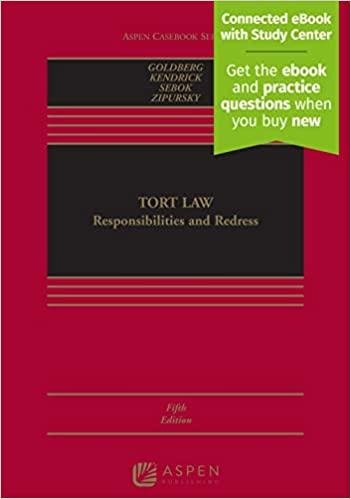Question
One evening, five young racialized men, including the 20yearold accused, were gathered in the private backyard of a townhouse at a Toronto housing cooperative when
One evening, five young racialized men, including the 20yearold accused, were gathered in the private backyard of a townhouse at a Toronto housing cooperative when three police officers arrived. The young men appeared to be doing nothing wrong. They were just talking. Two officers entered the backyard, without a warrant or consent. They immediately questioned the young men and requested documentary proof of their identities. The third officer patrolled the perimeter of the property, then stepped over the low fence enclosing the backyard and directed one of the men to keep his hands where he could see them. One officer questioned the accused, demanding that he produce identification and asking him what was in the satchel he was carrying. At that point, the accused fled, was pursued and arrested, and found to be in possession of a firearm, drugs and cash. At his trial, the accused sought the exclusion of this evidence under s. 24(2) of the Charter on the basis that the police had infringed his constitutional right to be free from unreasonable search and seizure and from arbitrary detention, contrary to sections 8 and 9 of the Charter. The accused was convicted at trial. The Court of Appeal dismissed the accused's appeal from his convictions. The accused appealed to the Supreme Court of Canada which allowed the appeal, excluded the evidence, set aside the convictions and entered acquittals. QUESTIONS: We have talked all semester about the first principle of evidence law; namely, that all relevant and probative evidence should be put before the trial court. On what basis can the exclusion of relevant evidence (such as a firearm and drugs) be justified in this case? (2 marks) Do you think there is the possibility that police officers sometimes use the tool of investigative detention in ways that have a discriminatory effect on individuals? Explain your answer (2 marks) What Supreme Court of Canada does the above fact pattern come from? (1 mark)
Step by Step Solution
There are 3 Steps involved in it
Step: 1

Get Instant Access to Expert-Tailored Solutions
See step-by-step solutions with expert insights and AI powered tools for academic success
Step: 2

Step: 3

Ace Your Homework with AI
Get the answers you need in no time with our AI-driven, step-by-step assistance
Get Started


